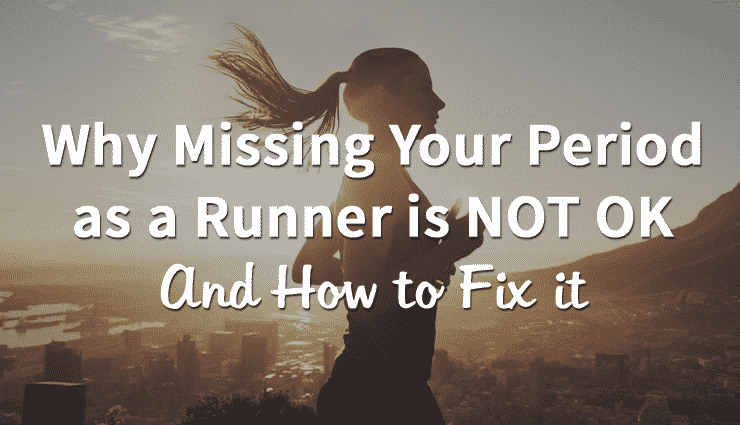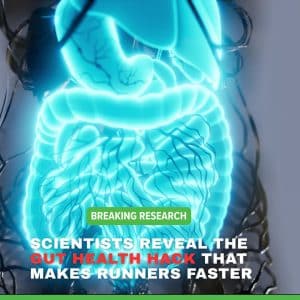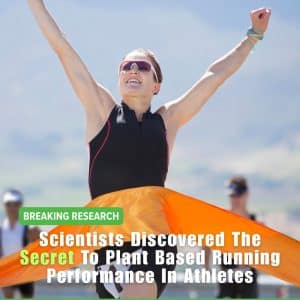So, you may already be asking yourself – how come a guy is writing about menstruation? Well, here are three answers to help explain:
- Many female runners do not understand the significance and health implications of irregular/missed periods and some even see ceased menstruation as a ‘natural’ consequence of hard training.
- Female runners seeking professional advice for a running related injury from a male therapist need to have the confidence to mention any menstrual irregularities as it could prove highly significant.
- Many (if not most) male runners have a limited knowledge in this area; a better understanding could help support for partners, daughters, female colleagues, etc.
Let’s start by making something very clear: despite what you may have read in magazines or heard in running clubs, female runners of any level should aim to have normal monthly periods.
Unfortunately, a popular myth amongst female athletes is that irregular or missed periods are a natural consequence of training hard, and that everything will fall back into place once training intensity is reduced.
Sadly, this is not always the case; missed periods, medically referred to as amenorrhea, are a sign that the body is not receiving adequate nutrition and over time can lead to low bone mass density, increased susceptibility to stress fractures and early onset of osteoporosis. It can also make it more difficult to become pregnant or maintain a healthy pregnancy.
Studies show that amenorrhoea is particularly common amongst female long distance runners.
There are many reasons why menstrual periods may stop (or in the case of younger girls not start by the age of 16), so it always important to get checked out by a GP or physician.
In this article, we are primarily concerned with what is referred to as athletic amenorrhea, i.e. disturbed menstruation due to excessive levels of exercise.
Athletic Amenorrhea
To understand how over-exercising can affect menstruation, it is important to understand the role of oestrogen (spelt ‘estrogen’ in American English) in the female body.
Oestrogen is the primary female sex hormone responsible for the development and regulation of the female reproductive system and secondary sex characteristics. It is also involved in the thickening of the endometrium, a mucous membrane that lines the inside of the uterus (womb).
Every month, the endometrium becomes thick and rich with blood vessels in preparation for pregnancy; if the woman does not get pregnant, the endometrium is shed, causing menstrual bleeding.
Male readers will be happy to hear that they also have oestrogen in their body (serves in functions of the reproductive system such as sperm maturation) but far less than women, especially of reproductive age.
Though it’s not entirely understood why, excessive exercise (as well as under-eating and over-stress) can cause the hypothalamus (a gland in the brain that plays an important role in maintaining body processes such as body temperature, metabolism, sleep cycles, etc.) to stop functioning normally, ultimately leading to a reduction in levels of oestrogen and disturbed menstruation.
The potential health hazards of this are explained below.
Bone Health
Oestrogen is essential for building strong bones.
If your body is not producing enough oestrogen, it takes calcium from your bones to keep calcium levels in the blood at a normal level.
This lowers bone mineral density (sometimes irreversibly), meaning the risk of stress fractures increases significantly.
Studies show that 24% of female athletes with no or irregular periods experience stress fractures compared to only 9% of regularly menstruating athletes.
It is particularly dangerous for young female runners as the early teenage years are hugely important for bone structure development. Teenage runners who ignore irregular or missed periods have a heightened chance of developing stress fractures in later years, as well as early onset of osteoporosis (bone disease that causes low bone mass and a breakdown in bone structure).
Research also suggests that even if menstrual periods return to normal, the increased risk of osteoporosis is still there.
Female Athlete Triad
The term female athlete triad refers to three linked health problems:
- Low energy availability
- Menstrual problems – irregular or missed periods.
- Weak bones – low bone density for age & heightened susceptibility to stress fractures
Any one of these three health conditions warrant a visit to the GP but when all three are happening at the same time, there is an immediate need for medical attention and activity modification.
The key to avoiding female athlete triad sounds simple: make sure you are getting enough calories to fuel your runs and recover properly.
Unfortunately, for many female runners this can be very challenging. We could talk all day about the huge pressure that society places on women to lose weight.
Anorexia is extremely prevalent among female athletes, particularly distance runners and dancers.
What one female runner sees in the mirror can often be extremely different than what others see, and adjusting one’s goals and aspirations to a recognizably healthier level can be a long, tough journey.
Many female runners may not even realize that they are not eating enough.(Here’s a simple calculator to tell you exactly how much you need to eat that factors in the miles you are running)
Recognizing reduced energy levels can be very tricky, especially if you can’t actually remember the last time you didn’t feel tired. For runners experiencing female athlete triad, successful recovery can often require combined medical assistance, including nutritional and psychological support.
Re-establishing a healthy balance of calorie intake to cover exercise and everyday function can take time, dedication, understanding and patience.
Fuel For Growth
As runners, we typically think of calorie consumption as a way to provide enough energy to get through our run sessions. In reality, this is only half of it.
Calorie consumption also needs to be sufficient to fuel the recovery & growth phase.
You do not get stronger whilst running – quite the opposite in fact; whilst running you are actually breaking things down – you are emptying your body’s reserves and demanding it to get stronger.
During the recovery & growth phase your body requires fuel to repair itself and in doing so get stronger for the next session.
If you are a female runner and your calorie intake is not sufficient, you will end up with an energy deficit for everyday life, and your body will not be able to carry out energy dependent functions such as menstruation and bone repair.
Recognizing Triad Symptoms
All runners should now and again take a step back and ask themselves “do I actually feel healthier for all this exercise I am doing?” With race diaries full and PBs waiting to be broken, it is easy to lose track of the present.
Most recreational runners started running in order to improve daily fitness and promote a long, happy, healthy life. It is extremely easy to lose track of that.
- How do you feel when you wake up in the morning – invigorated or wiped out?
- Are you experiencing sufficient energy levels during the day or struggling to get through?
- Is your running performance improving or are you in fact getting tired quicker?
Pushing yourself to operate on low fuel will not help you re-fuel. It’s counter-intuitive. Female runners who ignore the symptoms above open the doors to more serious health conditions like iron-deficiency anaemia, menstrual problems and stress fractures. Once you accept you are in a state of energy deficit you can take your first step to proper recovery.
How Many Calories A Day?
Although there is often a lot more to eating than just counting calories, familiarizing yourself with your recommended daily calorie intake can be a good way of realizing if you are indeed under-fueling.
Many guideline tables are designed to help people avoid eating too much but for the active female runner the focus often needs to be on the opposite, i.e. are you eating enough?
Daily needs depend on body weight, gender, and activity level.
RunnersConnect Bonus
Download your Calorie Calculator for Runners. This calculator will tell you the exact amount of calories you burn each day so you can better target your nutrition needs.
Research suggests that whereas most male runners manage do consume enough daily calories by essentially eating whenever they are hungry, many female runners (of all ages) get caught up in trying to lose weight or maintain a body weight that is unrealistically low.
Many believe ‘the skinnier I am the faster I will run’ but sadly this isn’t altogether true.
Forcing the body to run on low energy levels can lead to a reduction in muscle mass, weakness and poor performances, and ultimately menstruation irregularities, loss of bone density and increased susceptibility to stress fractures.
In Conclusion
If you, a family member or female colleague are having irregular or no menstrual periods (or have reached the age of 16 and not yet started), it is important that you see your GP as soon as possible.
Despite what you may hear, female runners should aim for normal monthly periods.
Irregular or missed periods can be a sign that the body is not receiving adequate nutrition and a potential symptom of dangerous eating habits that could lead to low bone mass density, increased susceptibility to stress fractures and early onset of osteoporosis.
Irregular or missed periods can also make it more difficult to become pregnant or maintain a healthy pregnancy.
In order to avoid menstrual irregularities and the female athlete triad, try the following:
- Ensure you are consuming the recommended amount of calories for your current body weight and level of activity. Fuelling yourself properly is paramount. If in doubt seek the help of a nutritionist.
- Keep a record or your running sessions and be aware that for every hour of running you will need to add 600 calories to your base requirement (normally around 2200).
- If you run three times a week, it is highly likely that to meet daily requirements you will need to eat something every 3-4 hours. E.g. three meals (around 800 calories each) and two snacks (around 200 calories each) works well for someone requiring 3000 calories a day. Obviously make sure the snacks are non processed, healthy choices.
- If you realise you are eating too little and becoming increasingly anxious about your appearance, talk to your GP; they will understand your problems far more than you may imagine.
- Last but by no means least, try not to compare your body weight/shape to other female runners; successful runners come in all shapes and sizes!





